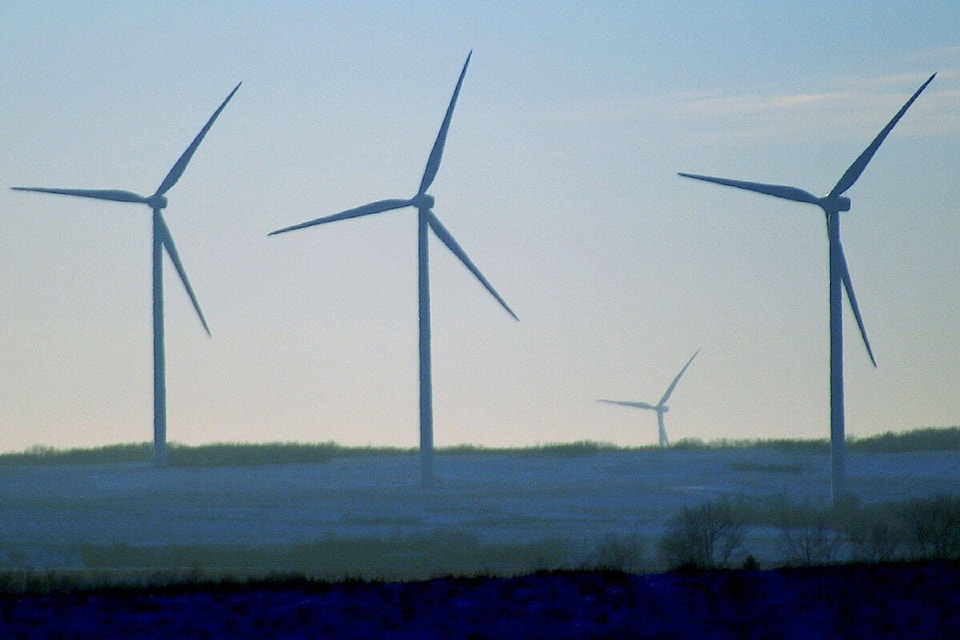Several wind projects have either been or are in the process of being installed in the county surrounding Castor.
The latest project, currently under construction in the northwestern part of the County of Paintearth is Capital Power’s Halkirk 2 project.
There are critics of these projects, and projects like them due to their impact on the environment. The Alberta Community Bat Program and those in academia have been two groups that have voiced concerns, particularly when it comes to the project’s effect on bats.
While the concerns are valid, and the projects do have an impact, the decisions on where to place them are not done in a vacuum. The final decision rests with the Alberta Utilities Commission (AUC) following a number of impact assessments.
“As part of the regulatory permitting process, renewable energy developers, including Capital Power, are required to assess the potential impacts to wildlife at their proposed wind site as part of operating their wind facility (if approved),” said Jennifer Schroeder, a senior specialist, environment, with Capital Power.
“Capital Power complies with these requirements which typically include completing pre-disturbance wildlife/studies and post-construction bird and bat monitoring programs.
“The Alberta Utilities Commission (AUC) is the regulator that decides whether new wind projects can be constructed in Alberta. As part of this process, project proponents must prepare a Renewable Energy Submission for Alberta Environment and Protected Areas (AEPA) according to the requirements of the Wildlife Directive for Alberta Wind Energy Projects (the Directive).”
The directive sets standards for companies to use in site selection, turbine location, preconstruction survey requirements, and construction and operational mitigation.
As far as studies go, the AUC doesn’t just take power companies at their word that the studies are done. According to Schroeder, the studies are reviewed and vetted by experts at several steps through the regulatory process.
“Only if found to be in the public interest are renewable projects permitted to be constructed,” said Schroeder.
“Monitoring of projects’ potential impacts, including on bats, continues post-construction. Capital Power uses an independent third-party assessor to field verify and report mortality to Alberta Environment and Protected Areas (AEPA) to determine what mitigation may be necessary.”
Once a wind project becomes operational, the responsibility of an operator does not end there. According to Schroeder companies are generally required to monitor impact on bat and bird populations for at least three years post-construction.
“During this period, site-specific bat protection measures are implemented, and the facility is required to demonstrate that bat mortality is less than the stringent thresholds established by AEPA,” said Schroeder.
“The facility then maintains those bat-protection measures throughout its operational life.
“Halkirk 1 Wind completed its required post-construction mortality monitoring programs in 2016. Since that time, Capital Power has continued to implement its annual bat mitigation program over and above regulatory requirements and has plans to continue this going forward.”
Halkirk 1 Wind, the project closest to Halkirk, currently uses bat mitigation programs to reduce bat mortalities during periods of high bat activity, usually in August and September when bats are migrating.
The curtailment does come at a cost. According to Schroeder, the curtailment of a 100-megawatt-plus field could cost “millions” in lost generation.
As mentioned above, Capital Power considers the impacts of curtailment or other bat protection measures when developing a project.
“Capital Power considers the impacts of curtailment or other bat protection measures when developing a project,” said Schroeder.
”Capital Power takes protecting bats and birds seriously. Each of our sites has their own unique characteristics and challenges and we assess each site to understand the risks, implement mitigation programs and minimize impacts.”
Schroeder says that the planning for this mitigation begins with the very first development of a project.
“To reduce impacts to birds and bats, project developers and facility operators complete extensive planning to identify and mitigate potential environmental impacts,” said Schroeder.
“This starts at the very beginning of a project and continues throughout construction and operations.”
Capital Power does this development through consultation with the biologists who conduct the environmental studies, which include site-specific data on bird and bat populations which is used to develop strategies used to mitigate impacts during construction and beyond.
-This is the final piece of a four-story series on bats in the province of Alberta.
